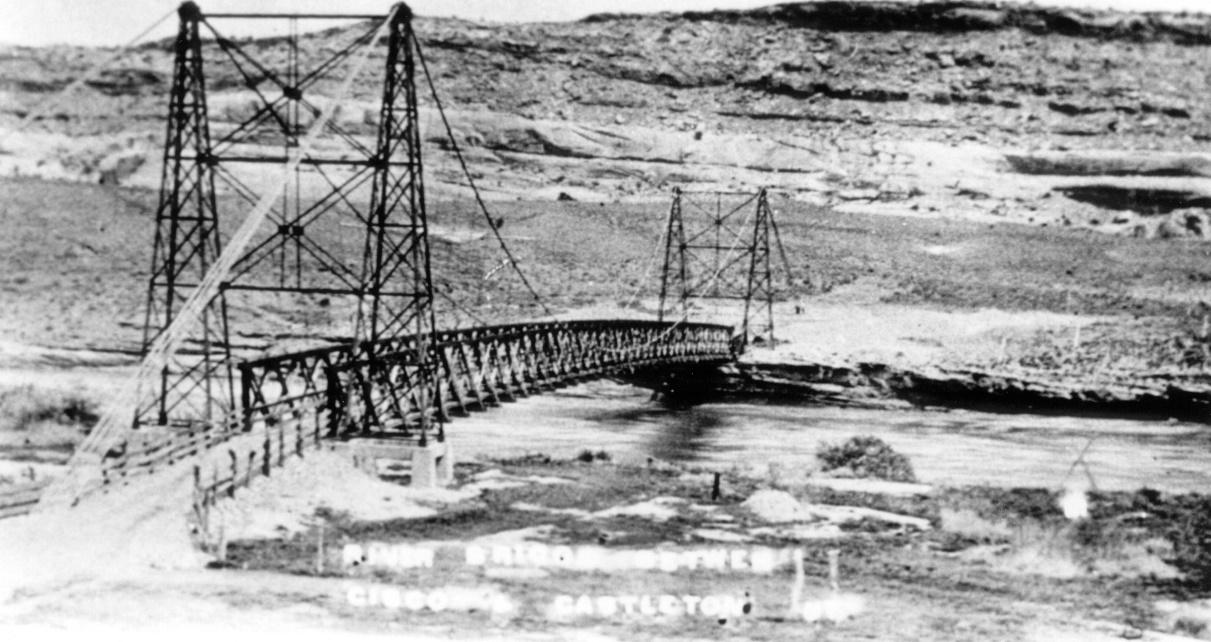Some information may be outdated.
Dewey Bridge brings travelers driving on Utah State Route 128 across the Colorado River, as the road climbs out of the confines of the steep canyon walls. Today, Dewey is the site of a campground, boat ramp, and a few homes on the north side of the river. Over a hundred years ago, however, a small community at this location was an important transportation hub crucial in helping to link the remote communities of southeastern Utah to the rest of the world.
In the 1880s, Samuel King built and operated a ferry at the site of today’s Dewey Bridge. Soon after, Richard and Martha Westwood and their children moved to Dewey to operate the ferry, run a lodging house for travelers, and establish a small post office. A small school served the children of the settlement, and silver mining was conducted in the area near where the Dolores River meets the Colorado.
Valued supplies from the outside world arriving in nearby Cisco by rail would be transported by wagon to the river’s edge, and ferried across or run further downstream through the flatwater section of the river toward the former settlement of Richardson near where Professor Valley meets the Colorado River. Goods were then transported overland to isolated communities such as Castle Valley and Miners Basin in the La Sal Mountains.
The existence of Dewey was due to its geography: it was situated in one of the only places where it was even possible for a wagon to approach and then cross the Colorado River. Dewey’s population dried up after the original Dewey Bridge was completed in 1916, rendering the ferry and stopover services obsolete. The Westwood family returned to Moab, and the buildings that once stood at Dewey fell into disrepair.
This spring, fifth-graders from Helen M. Knight Elementary School joined Moab Museum educators for a field trip to Dewey to learn about this former settlement and how its story ties into the broader history of Westward Expansion and the settlement of Grand County in the late 1800s. Students explored traces of the community including the surviving icehouse cave, fruit trees, and the scant outline of foundations at the former town site. Dewey is a readily accessible and fascinating historic site to visit, one of several ghost towns in Grand County.
The Moab Museum is dedicated to sharing stories of the natural and human history of the Moab area. For more information, visit www.moabmuseum.org.
Appreciate the coverage? Help keep local news alive.
Chip in to support the Moab Sun News.





